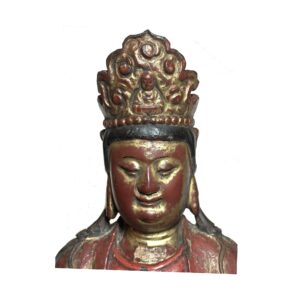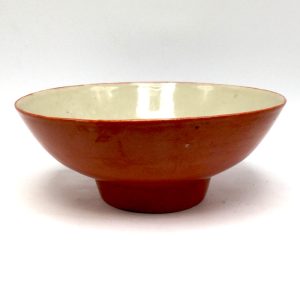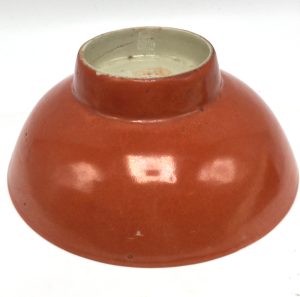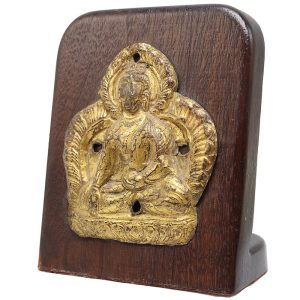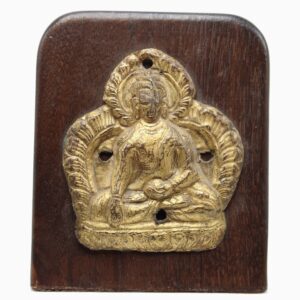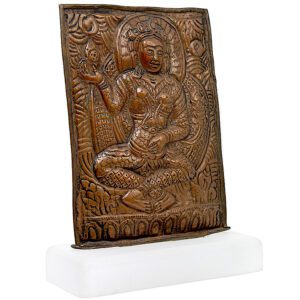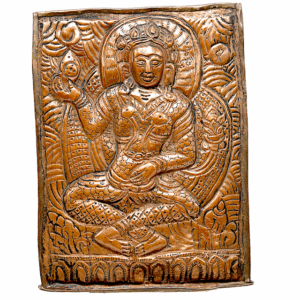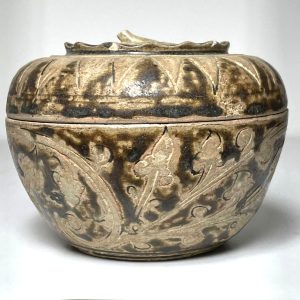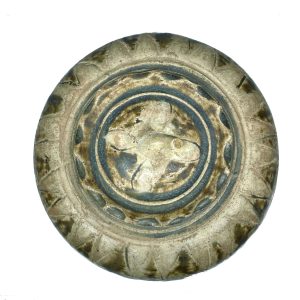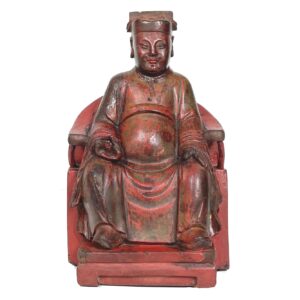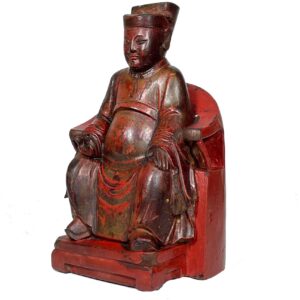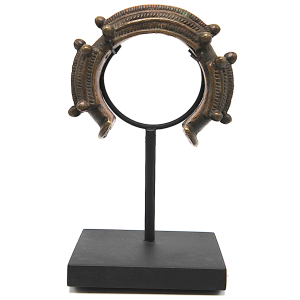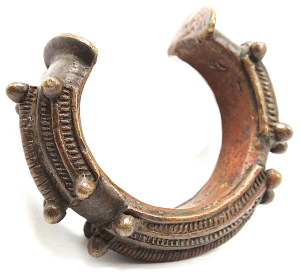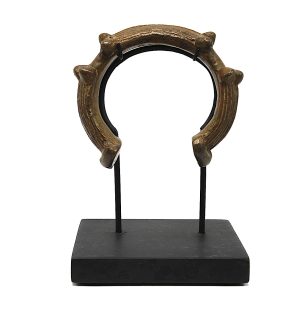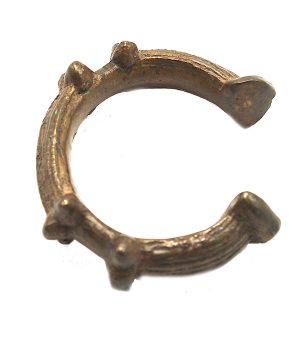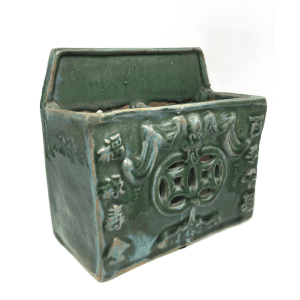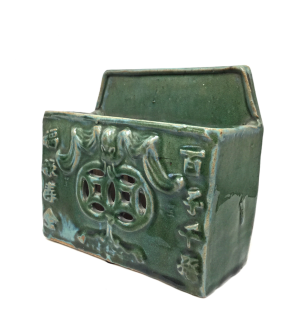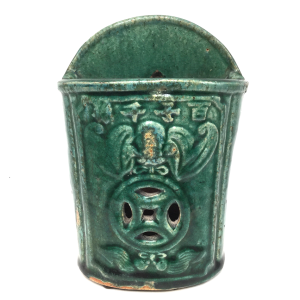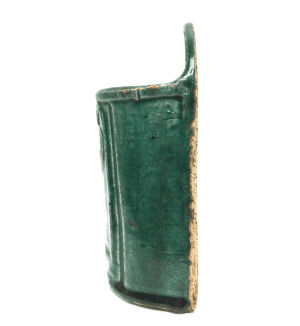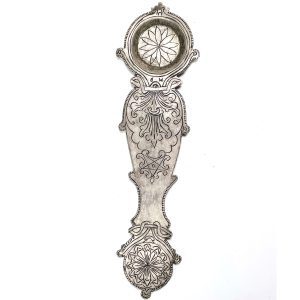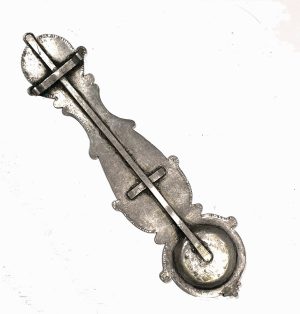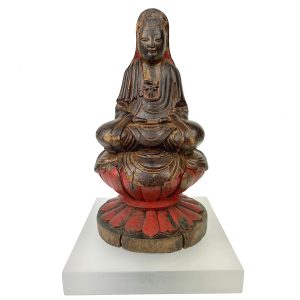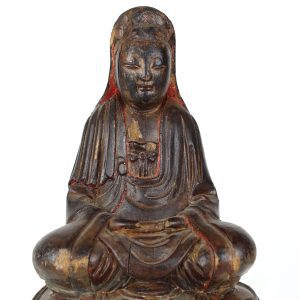Showing 85–96 of 203 results
-
Sale!


$3,750.00 Original price was: $3,750.00.$2,900.00Current price is: $2,900.00.
H: 19″ W: 10″ D: 8″ | CALL 213-568-3030 OR EMAIL [email protected] for shipping INFORMATION.
Wonderfully carved Nanhai Guanyin with ornate and beautiful diadem centered by elaborately framed Buddha Amitabha in meditation. Vibrant aura radiates spirituality, opulence, serenity and strength, as well as compassion and grace, making this a truly masterful piece of art.
-
Sale!


$135.00 Original price was: $135.00.$110.00Current price is: $110.00.
H: 2.5” Dia: 5.75” | FREE SHIPPING WITHIN CONTINENTAL U.S.
Beautifully shaped footed porcelain bowl, thinly crafted with a coral saffron glaze on the outside on a deep foot. Fading red stamped seal of an unknown kiln on bottom. Likely from the Tongzhi Period 1862-1874.
-
Sale!


$595.00 Original price was: $595.00.$495.00Current price is: $495.00.
with stand H: 5″ W: 4.6″ D: 4″ | FREE SHIPPING WITHIN CONTINENTAL U.S.
Tibetan repoussé of Shakyamuni Buddha in Earth Witnessing mudra within a trefoil arch on a lotus base.
-
Sale!


$250.00 Original price was: $250.00.$165.00Current price is: $165.00.
H: 7.5″ W: 5.75 D: 2.5″ | FREE SHIPPING WITHIN CONTINENTAL U.S.
Copper alloy repoussé votive plaque of Vishnu surrounded with head and body aureoles. Symbols of his power as Universe’s Protector include a conch shell, his crown and lotus leaves symbolizing purity, truth, and unfolding of creation.
-
Sale!


$385.00 Original price was: $385.00.$325.00Current price is: $325.00.
Ht: 3.375” Dia: 4.625” | FREE SHIPPING within continental U.S.
Sawankhalok elegant mangosteen shape stoneware lidded bowl with raised calyx, cream and brown glazes, incised floral and geometric designs to store spices, cosmetics, betel nuts and medicine.
-
Sale!


$650.00 Original price was: $650.00.$385.00Current price is: $385.00.
H: 7.25” W: 4.625” D: 3.5” | FREE SHIPPING WITHIN CONTINENTAL U.S.
Finely carved ancestor displaying status symbols: official’s attire and hat, horseshoe chair with feet on pedestal. Painted and lacquered front and back in red, traces of gilt, colors of “fu” as a wish for wealth, health and long life, aged from years of use into a great patina.
-
Sale!


$295.00 Original price was: $295.00.$210.00Current price is: $210.00.
H: 3.125” W: 4” Thick: 1.125.5” Circum: 9.5” | FREE SHIPPING WITHIN CONTINENTAL U.S.
Heavy antique exquisite C-shaped Senufo manilla, divided into ornate sections, deeply carved, pairs of raised round metal pieces. Fine patina with wood and metal stand.
-
Sale!


$195.00 Original price was: $195.00.$155.00Current price is: $155.00.
H: 2.75” W: 3.625” Thick: 1” Circum. 9.375” | FREE SHIPPING IN CONTINENTAL u.s.
Antique 3-sections Senufo manilla with incising, raised bosses and flattened discs at ends. Very heavy, used to store wealth, trade for purchases, bridal dowries or ceremonies. Fine patina, wood and metal stand.
-
Sale!


$185.00 Original price was: $185.00.$135.00Current price is: $135.00.
H: 7.125″ W: 8.375″ D: 3.75″ | FREE SHIPPING WITHIN CONTINENTAL U.S.
Shiwan 2 part chopsticks holder with top holes for hanging and bottom ones for drainage. Chopsticks were wedding gifts from mothers to daughters with auspicious wishes: sons as soon as possible, blessing for prosperity, happiness and fertility, life-giving rain and abundance.
-
Sale!


$115.00 Original price was: $115.00.$95.00Current price is: $95.00.
H: 7.375″ W: 5.125″ D: 2.5″ | FREE SHIPPING WITHIN CONTINENTAL U.S.
Chopsticks are ubiquitous in Chinese culture, and are often included in a bride’s dowry as a wish for a speedy arrival of many sons. This Shiwan ware green glazed wall pocket chopsticks holder has characters wishing for many sons and grandsons and an upside down bat holding a coin for “blessings in front of your eyes.”
Decorative utilitarian Shiwanware pieces are recognized for their fine modeling, vivid expression, and colorful apple-green and drip glazes. Chopsticks were commonly stored in wall pockets with a hole for mounting. Covered with auspicious symbols, they were often part of a bride’s dowry as “chopsticks” is a pun for “speedy arrival of sons.”
-
Sale!


$225.00 Original price was: $225.00.$175.00Current price is: $175.00.
H: 6.25 ” W:1.625 ” D:.25 ” | FREE SHIPPING WITHIN CONTINENTAL U.S.
Antique silver puja spoon used to offer water to the gods to show respect. Hindus use water to cleanse and purify one’s body, mind and spirit. The lotus symbolizes Lakshmi, the Goddess of wealth and prosperity.
-
Sale!


$495.00 Original price was: $495.00.$395.00Current price is: $395.00.
H: 8.675″ Dia: 4.5″ | Free SHIPPING WITHIN CONTINENTAL U.S.
Delicate white robed Guanyin in meditation on radiating lotus throne. Provincial humble, modest, relatable, yet beautiful matronly figure.
End of content
End of content


